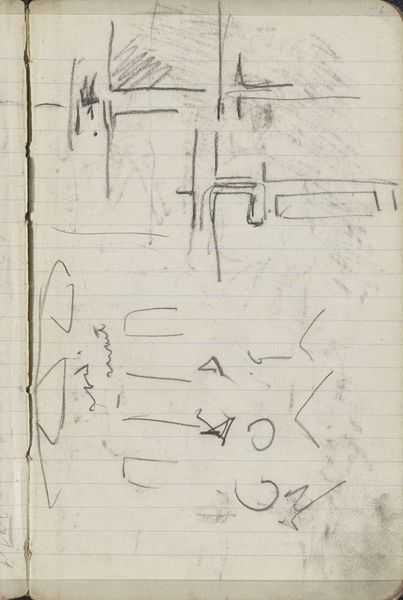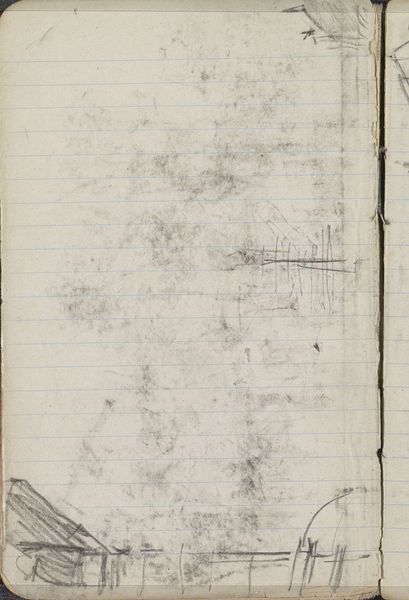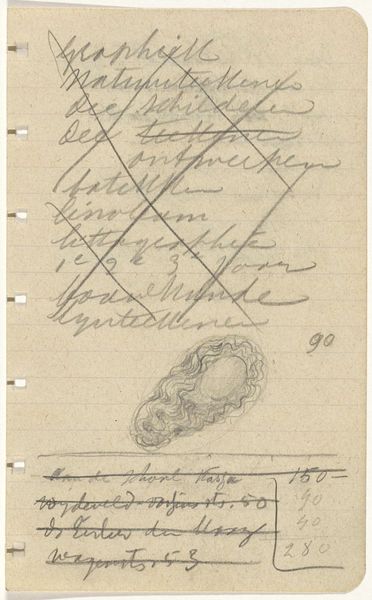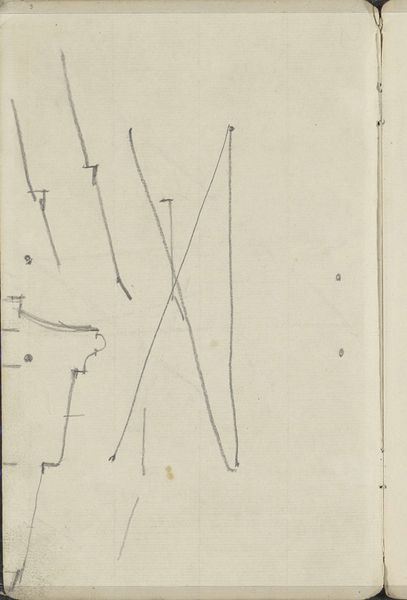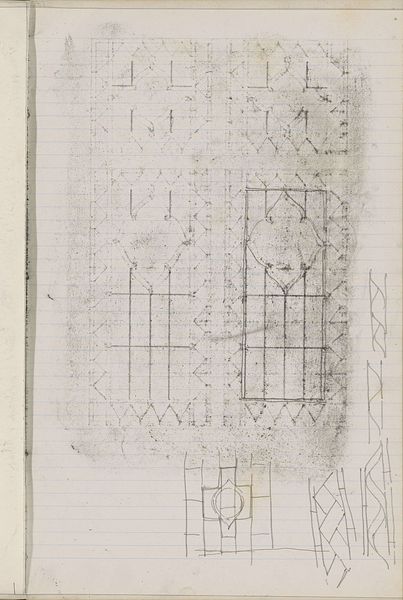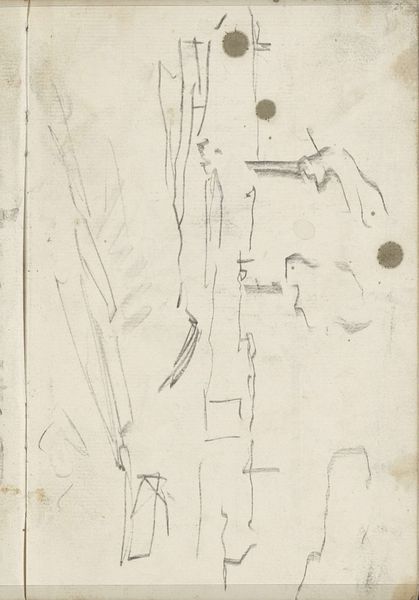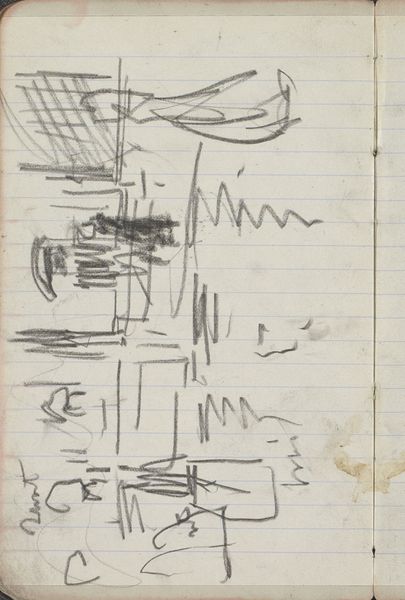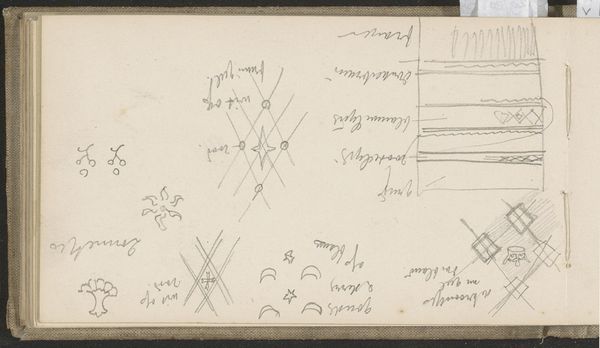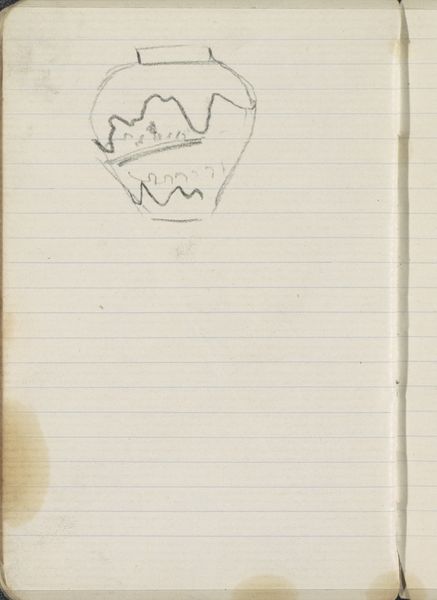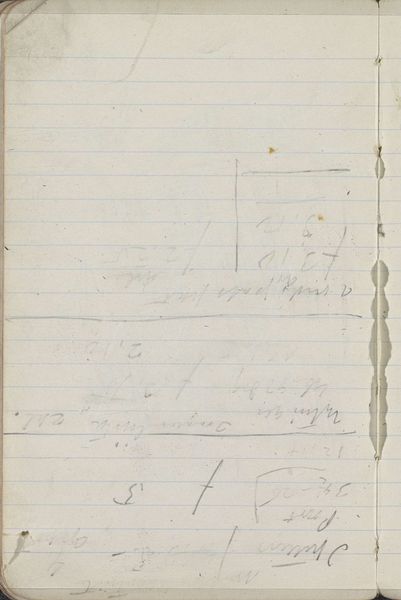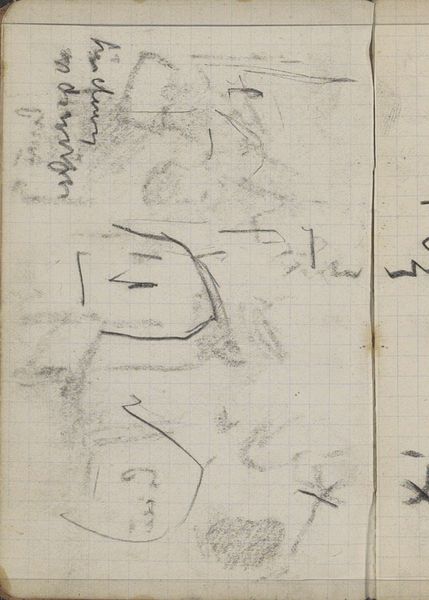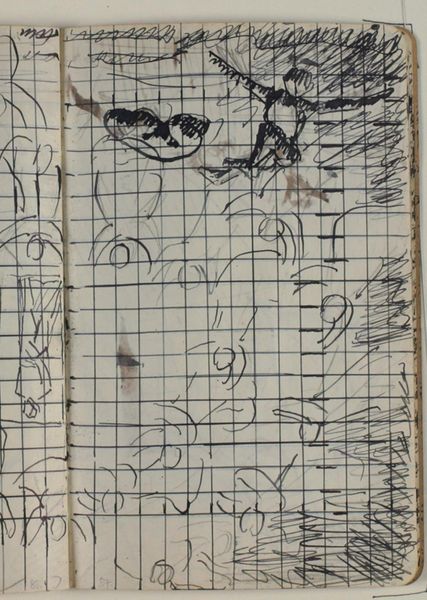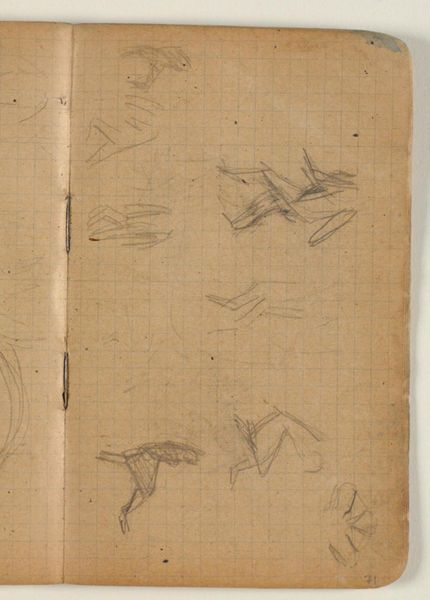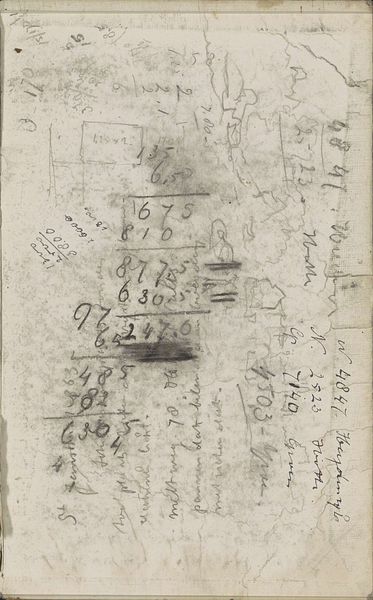
drawing, paper, ink
#
drawing
#
art-nouveau
#
paper
#
ink
#
geometric
#
calligraphy
Copyright: Rijks Museum: Open Domain
Curator: Welcome. We’re standing before a drawing entitled “Patroon met bloemen en ruiten,” which translates to "Pattern with Flowers and Diamonds,” by Gerrit Willem Dijsselhof, dating to around 1901. It’s currently held in the Rijksmuseum's collection and is rendered in ink on paper. Editor: It looks like a study in potential. The diamond grid is quite defined, but the floral motifs appear preliminary, almost fleeting. And that bold lettering down the right edge, unfinished too, gives it a dynamic, iterative feel. Curator: Exactly. Dijsselhof was deeply immersed in the Art Nouveau movement, which was all about integrating art into everyday life through design. The geometric precision overlaid with organic, stylized flowers is entirely characteristic of that period. There’s an inherent tension between machine-made repetition and hand-drawn fluidity. Editor: I agree. Look closely and you’ll observe subtle variances in the repeated patterns, revealing a distinctly human touch despite the mechanical framework of the design. What strikes me most is the textural interplay – the crisp lines against the more nebulous floral elements. It is essentially an exercise in balance. Curator: It’s intriguing to consider how Dijsselhof engaged with the evolving roles of the applied arts at the turn of the century. This design hints at his desire to find harmony between artistry and function in response to growing industrialization. Art Nouveau proposed designs which countered industrial ideals and Dijsselhof's rendering does this with great delicacy. Editor: Looking at those half-formed letters makes you question what these studies were used for. Does this document a font under consideration? A layout for printed materials? Regardless, the composition carries an inherent appeal. Curator: We’re granted entry into the artistic process, glimpsing how Dijsselhof strived to combine nature and form in service of a new kind of beauty, accessible to all. Editor: A truly revelatory view into the aesthetic aspirations of the era.
Comments
No comments
Be the first to comment and join the conversation on the ultimate creative platform.
